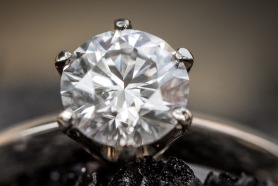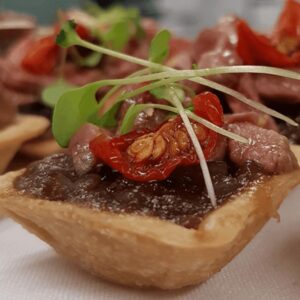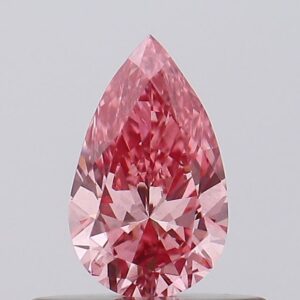The Ultimate Guide to Diamond Ring Prices

A diamond ring is more than just a piece of jewelry; it’s a symbol of love, commitment, and often, a significant investment. Understanding the factors that influence diamond ring prices or 鑽戒價格 is crucial for making an informed purchase and ensuring you get the best value for your money. This detailed guide will demystify diamond pricing, offer tips for smart shopping, and introduce you to a platform renowned for its reasonable diamond ring prices.
The 4 Cs: Cornerstones of Diamond Value
The price of a diamond or 鑽戒價格 is primarily determined by its “4 Cs”: Carat, Cut, Color, and Clarity. Each of these attributes plays a pivotal role in a diamond’s beauty, rarity, and ultimately, its cost.
Carat: More Than Just Size
Carat refers to a diamond’s weight, not its physical size, although heavier diamonds generally appear larger. One carat is equivalent to 200 milligrams. It’s a common misconception that a 1-carat diamond will be exactly twice the price of a 0.5-carat diamond of similar quality. In reality, as carat weight increases, the price per carat also increases significantly due to the rarity of larger stones. For instance, a single 1-carat diamond is often more expensive than two 0.5-carat diamonds of comparable quality. This exponential pricing curve means that just shy of a full carat (e.g., 0.90-0.99 carats) can offer substantial savings with a visually imperceptible difference.
Cut: The Sparkle Factor
Often considered the most important of the 4 Cs, the cut of a diamond dictates its brilliance, fire, and scintillation—the qualities that give a diamond its sparkle. A well-cut diamond reflects light optimally, maximizing its visual appeal. The GIA (Gemological Institute of America) grades diamond cut from Excellent to Poor. While other Cs relate to the inherent qualities of the rough diamond, the cut is a result of the masterful craftsmanship that transforms it. Investing in an excellent cut is highly recommended, even if it means compromising slightly on other Cs, as a poorly cut diamond, regardless of its color or clarity, will appear lifeless.
Color: The Absence of Tint
Diamond color is graded on a scale from D (colorless) to Z (light yellow or brown). Colorless diamonds (D, E, F) are the rarest and most expensive. However, “near-colorless” diamonds (G, H, I, J) can appear colorless to the naked eye, especially when mounted in a ring. Choosing a G or H color diamond can offer significant savings without compromising on the diamond’s perceived beauty. The metal of the setting can also influence how a diamond’s color appears; for example, a yellow gold setting can make a slightly warmer diamond appear whiter.
Clarity: The Purity of the Stone
Clarity refers to the presence of internal imperfections (inclusions) and external blemishes on a diamond. The clarity scale ranges from Flawless (FL) to Included (I3). Flawless diamonds are extremely rare and costly. For most consumers, “eye-clean” diamonds (those with inclusions not visible to the naked eye) offer the best value. These often fall into the VS1 (Very Slightly Included 1), VS2 (Very Slightly Included 2), SI1 (Slightly Included 1), or sometimes SI2 (Slightly Included 2) grades. Strategic setting can also hide minor inclusions, further saving you money.
Beyond the 4 Cs: Other Price Influencers
While the 4 Cs are paramount, several other factors also contribute to a diamond ring’s final price:
- Diamond Shape: Round brilliant diamonds are the most popular and generally the most expensive due to demand and the amount of rough diamond material lost during cutting. Fancy shapes like oval, princess, cushion, and emerald cuts can offer larger face-up sizes for the same carat weight and often come at a lower price point.
- Certification: A reputable diamond certification, such as those from GIA or AGS (American Gem Society), is crucial. These certificates provide an unbiased assessment of the diamond’s 4 Cs and other characteristics, ensuring you know exactly what you are purchasing. Diamonds without proper certification carry a higher risk and can be overpriced.
- Setting and Metal Type: The design complexity of the ring setting and the type of metal used (e.g., platinum, 18K gold, 14K gold) significantly impact the overall cost. Platinum is generally the most expensive, followed by 18K gold, then 14K gold. Intricate settings like halos or pavé designs require more craftsmanship and material, thus increasing the price.
- Natural vs. Lab-Grown Diamonds: Lab-grown diamonds are chemically, physically, and optically identical to natural diamonds but are created in a laboratory. They are significantly more affordable than natural diamonds, offering a budget-friendly option for those seeking a larger or higher-quality stone for their budget.
Smart Shopping Strategies for Diamond Rings
Navigating the diamond market can be daunting, but with a few smart strategies, you can maximize your budget:
- Prioritize the Cut: As mentioned, a diamond’s cut is paramount to its sparkle. Don’t compromise on an Excellent or Very Good cut.
- Consider “Eye-Clean” Clarity: Unless you have a jeweler’s loupe, you won’t see inclusions in VS2 or SI1 diamonds. Opting for these grades instead of Flawless or VVS can save you thousands.
- Go for Near-Colorless: G, H, or I color diamonds often appear just as colorless as D, E, or F to the naked eye, especially when set.
- Think “Off-Carat” Weights: Diamonds priced just under popular carat markers (e.g., 0.90 ct instead of 1.00 ct) can offer substantial savings with negligible visual difference.
- Explore Fancy Shapes: If a round brilliant isn’t a must-have, consider fancy shapes for a larger-looking diamond at a lower price.
- Buy Online from Reputable Retailers: Online jewelers typically have lower overhead costs than brick-and-mortar stores, allowing them to offer more competitive prices. Always ensure they provide GIA or AGS certification and have a clear return policy.
- Educate Yourself: The more you understand about the 4 Cs and diamond pricing, the better equipped you’ll be to make a confident purchase.
Tingdiamond.com: Your Best Platform for Reasonable Diamond Ring Prices
When it comes to finding a reliable online jewelry shop that offers reasonable diamond ring prices or 鑽戒價格 without compromising on quality, tingdiamond.com stands out as an excellent choice. Tingdiamond.com has garnered a reputation for providing brilliant GIA-certified diamonds at competitive prices. Their platform features a wide selection of diamond rings, including engagement and wedding rings, with transparent pricing for both loose diamonds and various settings. Customers consistently praise their professional advice, responsive service, and the exceptional quality of their products. They emphasize providing GIA-certified diamonds, offering 360° HD videos for detailed inspection, and even providing lifetime maintenance, ensuring peace of mind for your significant investment. For those seeking a beautiful, high-quality diamond ring without overspending, tingdiamond.com provides a trusted and value-driven shopping experience.
Conclusion
The price of a diamond ring is a complex interplay of its unique characteristics. By understanding the 4 Cs, considering other influencing factors, and employing smart shopping strategies, you can find a stunning diamond ring that fits your budget and expresses your love beautifully. Platforms like tingdiamond.com empower consumers to make educated decisions, ensuring that the dream of owning a magnificent diamond ring is within reach for many.



